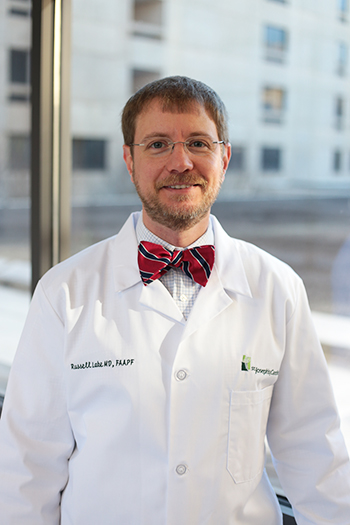‘Tis The Season
For certain patients, symptoms of depression can follow a seasonal pattern
Southerners may sometimes dream of a white Christmas, but by New Year’s Eve most are grateful for the mild temperatures and general lack of dark winter clouds. Anything else sounds miserable, and for those who suffer from seasonal affective disorder, it truly can be.

“Seasonal affective disorder, or SAD, is a subtype of an underlying depression disorder, or in some cases bipolar disorder,” explains Russell Lake, MD, of SJ/C Primary Care in Richmond Hill. “With this condition, a patient’s depressive
symptoms demonstrably follow a cyclical, seasonal pattern each year.”
Naturally, many people believe that SAD only affects those in the northern regions of the world, with months of short, cold days and less light. However, your spot on a map is not the determining factor.
“A patient may think, ‘It can’t be seasonal affective disorder, I live in Sun City!’” Dr. Lake says. “But recent studies have shown that a person can suffer from SAD regardless of their latitude. What is crucial is
to recognize is the cyclical pattern of symptoms.”
Feeling SAD
What does seasonal affective disorder feel like? As with chronic depression, it can have both mental and physical effects.
Common symptoms of seasonal affective disorder include:
- Having decreased or low energy
- Either too much sleep (hypersomnia) or not enough sleep
- Either increased appetite (especially for carbohydrates) or decreased
- Withdrawal or isolation, often referred to as hibernating
- Feelings of hopelessness, worthlessness or guilt
Of course, thoughts of self-harm are a serious symptom of any type of depression and if such thoughts arise, you should discuss this with your doctor or at least a friend or family member.
Dr. Lake has screening tools and other diagnostic criteria to help determine if a patient is experiencing depression and the possible types. Along with an investigation into any possible seasonal patterns, Dr. Lake will also need to determine the level
of impairment to best prescribe individual treatment.
“Every patient is different,” Dr. Lake says. “For patients with SAD, we may be able to treat them for only the season in which they are affected. Conversely, common treatments for SAD may not be effective for patients dealing with chronic,
year-round depression.”
Seeing The Light
As with depression, two common treatments are medication and psychotherapy. Dr. Lake will discuss options with his patients and often prescribes medication that regulates the amount of serotonin in the brain. Serotonin is a neurotransmitter that affects
mood and feelings of happiness and wellbeing.
Seeing a therapist and discussing strategies to manage negative thoughts has also helped many patients with depression and anxiety.
For patients with SAD, there is also light therapy (sometimes known as phototherapy). Patients use a device called a light therapy box, which does more than simply give off light—it mimics natural outdoor light, affecting brain chemicals that affect
mood, sleep, and the body’s circadian rhythms.
“Light therapy is a mainstay for people with a fall/winter onset of SAD,” Dr. Lake says.
Patients simply work or spend their leisure time next to the light therapy box, so that its light enters their eyes indirectly. A consistent routine, for the right amount of time and intensity level each day, generally brings the best results.
Not Just For Winter Anymore
Surprise! For some patients, treatment doesn’t involve more light but less.
“Though less common, a seasonal component for depression symptoms can have a spring/summer onset,” Dr. Lake says.

The symptoms can be the same, as well as the medication and therapy treatments, but physicians try to help these patients limit both light and heat exposure, which can be a challenge in the sunny hot South. But at least that challenge has been identified.
“Recognition is key because now we know what to expect,” Dr. Lake says.
No matter the timing of onset, Dr. Lake also encourages patients to take some daily steps to boost their wellbeing. This includes getting outside (using the best timing in relation to your type of SAD), getting 20-30 minutes of exercise, and practicing
good sleep hygiene to get 6-8 hours of restful, undistracted sleep.
“We know these lifestyle habits can help prevent things like heart disease and stroke,” Dr. Lake says. “But a commitment to these smart choices is also generally good for our mental health.”